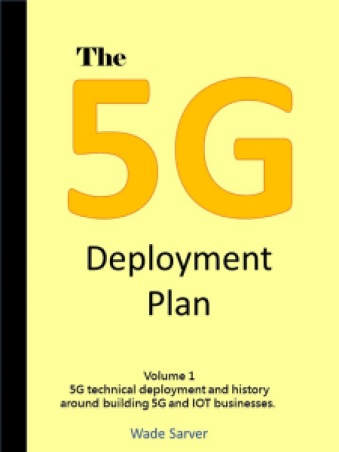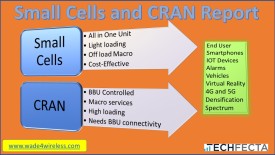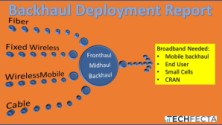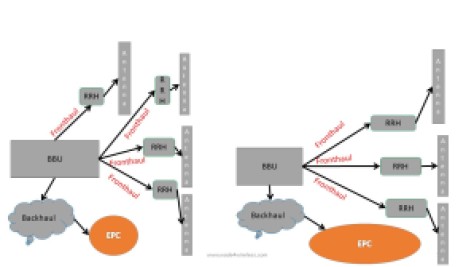This is an excerpt from my latest report Available at
Costs of Deploying Fiber and Wireless
The thing about running any type of equipment is more than the cost of the equipment and installation. It’s all the other stuff that most magazines and articles won’t cover. It’s the delays, permitting, acquisition, and approvals needed to be managed. These are necessary evils for any deployment. Just ask any carrier. Therefore they are adamant about fighting local jurisdictions for the small cell costs of permitting and rent.
This is all before you deploy one thing, pay for one piece of equipment, or even design the backhaul. It needs to be worked through, and chances are it will be around 10% to 25% of the cost. If you’re talking small cells, then it could be 50% to 75% of the cost.
The Rise of Site Acquisition
Let me give you some history, at least from my experience. When we deployed systems years ago, we had to pull permits for structures we built, like towers, poles, and so on. That made sense and you had to get the permission of all the people around the tower as well as the local jurisdiction, like a tower, township, or a county. However, you didn’t need their permission to put stuff on the tower.
When adding to the tower, the owners generally knew what it could hold and what would overload it, so that was not an issue. Cell systems were very simple, usually, an antenna attached to the tower with coax. No big deal.
Then 2 things happened. Local townships wanted to have a permit for everything that attached to a tower or pole. They wanted permitting dollars for each item on the tower. Even though they knew nothing about it, they wanted to have a say in what goes on someone else’s tower. If you ever had to pull a permit for a home addition, it’s the same thing. While they say it’s to make sure they know what’s in their jurisdiction, we all are sure it’s because they want to tax you more. It’s all about the property tax and what they say it’s work. I mean, if I finish my basement, how does that affect them in any way? Only by the tax dollars.

Then the cell companies and backhaul companies started adding larger and larger equipment to the towers. It became overwhelming. Everyone started putting radio heads on the towers. They started adding full platforms instead of simple antennas. They added more and more equipment to the top of the tower. Dishes had radio heads on them, and cell antennas had radio heads stacked up behind them. Large radio heads, coax, and multiple runs into an antenna. Having lots of weight on the tower that needs to be certified safe so the tower will not collapse.
So not you have to deal with pulling permits, zoning, and paying the local jurisdiction for access to the tower. Most times it was local, and you used to have to send someone to the local board meeting to get permission. Can you imagine? Verizon and AT&T had to send someone to meet with the local zoning commission on the first Monday of each month hoping to get approval to mount their equipment on a tower? Now, take that times 1,000 and you have the reality of how much it costs to send people around to get permission. By the way, you were lucky if they would get to it or approve it in one meeting. You may have to go to 2 or 3 meetings to make it happen, so that’s 2 or 3 months of delay. It’s not that bad anymore, but it was like that for years. All the carriers had to deal with this. Now they just need to pull permits. (This is why the carriers have such an issue with local jurisdictions!)
Then you have all the tower issues, like a structural assessment and mount assessments to see if you can make changes to what is on the tower. Any changes need a full structural done. If you plan you can do the assessment with the proposed future equipment.
For the tower side, this added a ton of cost, and it sparked a new industry, the site acquisition industry. They handle all of that, and they earn every penny for all the work and bull shit that they have to put up with. Many jurisdictions see wireless as the enemy, that is until they use their smartphone to call all their friends to complain. They just don’t get it.
Wireless Costs
I gave you an example of how the costs of doing tower work is not going away. The site acquisition portion has grown while the carriers did a good job of reducing costs in other areas.
One area was tower climbing. The carriers have reduced that by over 50%. However, did they take too much out? Did they drive it down too far? The carriers have driven down tower services to the point where margins are crap, and they didn’t care because until recently they never had to pay anything when a climber falls and gets injured or dies. That all changed in May of 2018 when a jury told AT&T Mobility to pay the family of a fallen climber $30 million. A landmark case and one that will make the carriers think about driving cost out of tower work. Lower cost generally means lower skilled climbers, less training, poor safety gear, and so on. More can be found at http://wirelessestimator.com/articles/2018/att-settles-for-a-record-30-million-to-injured-tower-technicians-family/ about the case.
The other thing that has helped the carriers is automation. While they still rely on drive teams for testing, for the most part, they have automated RF engineering and optimization. This has dramatically reduced the cost and effort put forth.
The labor of any deployment adds up. However, as the work becomes a commodity, the costs go down. So far, the carriers can’t replace the tower climber, but they have been offshoring and automating other services to save costs.
Utility power is another cost. If you need power at the site, which you do, running utility to a site costs money. It could also add delays. You need a licensed electrician to work with the power company to make sure you have the power in properly. Then the permitting and inspections that go along with it. It adds delay and cost to any project. You will need power, whether at a pole or in a building or at a tower site. It all adds up.
Before you mount anything:
Before you mount anything, this is generally a 3-month wait. It’s similar to fiber. Fiber deployments have all the costs of permitting, permissions, and more. They often run into a dig once policy with cities. This is good for the city because they don’t want the streets dug up again and again, but the company running the fiber may have to wait until one or more companies are also running fiber. This adds delays, costs, and competition. If you’re deploying first, you have a chance to lock up accounts, but if you must wait for the competition to go alongside you, I am pretty sure they are going to go after the same customers you thought you had locked up. It is a dog eat dog world out there.
Drawbacks of Running Fiber
The thing about running fiber everywhere is not the fiber itself. It is the costs associated with running the fiber. In fact, anything you deploy has high costs. Building towers and adding a radio to a pole has a high cost. While you may think it’s the installation and design, that is a small portion. It’s all the civil work and the acquisition paperwork that needs to be done to make it happen.
I read a great blog by Michael Dargue at https://blog.cartesian.com/why-is-the-cost-of-ftth-not-falling-faster-five-things-that-dont-follow-moores-law about the costs of running fiber and why it’s not getting any cheaper. He compares it to Moore’s Law, but in my experience, it’s hard to compare services to components. Services don’t always get real cheap unless you can do it overseas.
All the things that need to be done like the civil engineering if you go underground and any structural engineering you may need to do on a pole, that needs to be done before anything gets ordered, much less deployed. These costs have yet to be reduced too far. The companies have done a good job with the bidding and reverse auctions, but it still costs money.
The other thing, like tower work, labor. Again, bidding and reverse auctions have driven the costs down, but you still must pay qualified and licensed workers to do the work. In some cases, you have prevailing wage and union fees that must be accounted for. This is not cheap, and chances are they add to the costs. In some cities, you may have to choose from 2 or 3 companies only because of union regulations. While there is competition, you can’t bring someone cheaper in from out-of-town. The costs remain the same regardless.
Permitting is still an issue, not just for the costs but for the delays. In some cases, I have heard of cities letting a company deploying fiber get a blanket permit for an area. This saves time and costs. It is a great idea. All the company needs to do it log where they attach and send in the qualifying documents. This is a great idea for a company deploying fiber across a city. It’s an excellent way for the city to get the permit fees but cut down on the labor to process all the paperwork. It seems like a win-win.
If you have a router at a pole, that costs money. Running utility power to a pole is expensive. Even if you need to run your own service in a building, this adds cost. It could add delays. Think about all the permitting and inspections. If you’re in a building, then you need to modify the lease to account for power, and you need the permission of the building owner. More delays and costs.
No matter what you deploy:
Costs for utility, permitting, site acquisition, and more all add up. You will need a team of project managers and engineers to manage this. You will need a construction manager to go to the site to verify things are happening per the plan, paperwork, and schedule.
Before companies spend money on any deployment, they have to overcome the hurdles of planning. They need to worry about what and how they deploy, what they will attach to or where, they will bury the fiber. Chances are the end customer will put things out to bid or reverse auction to drive costs down. One thing you learn is that loyalty is disappearing in this new business arena. It’s a fight to get the business then a struggle to maintain margin. All the liability is put on the front line, the installers.
They also need to make sure they have all the hardware necessary up front. There are always surprises that jump up and say, “GOTCHA!” when doing any deployment. On a tower it’s the mounting hardware and clamps, on a pole attachment is mounting hardware, in the ground it could be going under driveways or a street or an electrical line up ahead. These add delays to the deployment. By the way, don’t’ forget weather! For all installations, weather can delay everything. Often overlooked and there is nothing you can do. Weather is a risk you must accept. If you’re just thinking rain, guess again. It could be a snow storm, extreme cold or heat, hurricanes, or even tornado warnings. They all make the deployment stop. They all add delays, and they are all safety issues.
A good construction manager can make all the difference in the world. They can deal with costs, put in an effective system for change orders and be responsive to problems. They can also plan properly accounting for potential problems. It’s all about planning and reacting. They should be able to deal with most problems and have a budget to do so.
Rent Applies to Everything
If you follow me at all, you know that the carriers need to pay the tower companies a lot of money to be on their tower. This is an OpEx cost that they need to deal with. So far, there is no alternative. OK, you said small cells and poles, right? Maybe building tops? Listen, rooftops and building usually have stricter leases and cost more to go into because it is prime real estate. Poles for small cells are an extension of the macro site. Get it, not a cost savings, only additional costs.
However, what about fiber? I mean you bury, it’s free right? The rules for right of way allow it to lay there for free? Well, if they attach to any pole or go through someone else’s right of way, there is a fee. To attach to a pole, you need to pay something to the pole owner. Albeit, it might be three to ten dollars a pole. It doesn’t sound like much, right? The thing is, a fiber has to attach to more than one pole, probably hundreds if not thousands to get where it is going. Now we’re talking that small amount times a thousand, every month. Get real, there’s a cost to most everything. Why do you think to be first matters? You get in and get the business without competition. The cable companies knew how to lock up that business before anyone else could compete. They made deals with the local municipalities and pole owners that would protect them against the competition. They’re not stupid. It’s business.
When thinking of fiber, there could be monthly costs for access to the internet in specific areas, or maybe building access costs money. Maybe they have routers that need power, another monthly cost. It all adds up.
Summary of costs:
I think to go into a deployment we all look at the hardware and the installation costs. This is easy, hey, five grand for a tower crew and the hardware is about 100 grand for the equipment then maybe another five grand for the groundwork. This is a dream world friend. The point of this article is to pull you into the real world.
Here is a sample of the table of contents:
The Mobility Backhaul Report
- The Overhaul of all the Hauls!
- Overview:
- What is Backhaul?
- What is Midhaul?
- What is Fronthaul?
- Do these connections have to be Fiber?
- Fiber overview:
- Installation:
- Permitting:
- Competition:
- reoccurring fees:
- Who benefits from the fiber growth?
- Wireless overview:
- Spectrum:
- Spectrum for 5G Fixed Wireless
- System distinctions:
- Costs in wireless:
- Resources:
- What is Fixed Wireless?
- Fixed Wireless Overview
- Who will provide broadband?
- Why does Fixed Wireless Matter for City Growth?
- Fixed Wireless could be a key to Growth for Urban and Sub Urban areas.
- Unseen Costs of Deploying Fiber and Wireless
- The rise of Site Acquisition
- Wireless Costs
- Before you mount anything:
- Drawbacks of Running Fiber
- No matter what you deploy:
- Rent Applies to Everything
- Summary of costs:
- Broadband Initiatives for Cities
- Primary
- Partial
- Facilitator
- Not all Deployments are a Success!
- Smart City Investment
- Who buys broadband, really?
- Pricing matters!
- When Incumbents fight Back!
- What about Wi-Fi?
- Some States Prohibit Public Networks!
- City Strategies for a Broadband Initiative
- What will the future hold?
- Acronyms and Definitions

Furthermore:
No matter what you deploy, there will be costs that you didn’t think of. That’s normal. How you plan and react will make the difference.
This is an excerpt from my latest report Available at
Be smart, be safe, and pay attention!
See Ya!
More products from TechFecta and Wade4Wireless:







Do you know what to put in your SOW, the details needed to get paid for milestones or job completion?
 Putting together your smart city tech solutions, planning, development, and more…TechFecta! Guiding you to a better plan through consulting!
Putting together your smart city tech solutions, planning, development, and more…TechFecta! Guiding you to a better plan through consulting!

The foundations below do beautiful work, helping families in their time of need. Climbers often get seriously injured or die on the job. The foundations below support those families in their time of greatest need!


 Who will pay for it? The carriers won’t pay. The building owners only pay for what they have to.
Who will pay for it? The carriers won’t pay. The building owners only pay for what they have to.








 Putting together your smart city tech solutions, planning, development, and more…TechFecta! Guiding you to a better plan through consulting!
Putting together your smart city tech solutions, planning, development, and more…TechFecta! Guiding you to a better plan through consulting!






















